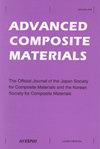Fundamental study on smart eddy current testing for identification of crack orientation by controlling electromagnetic field using electrically anisotropic plate
IF 2.3
3区 材料科学
Q3 MATERIALS SCIENCE, COMPOSITES
引用次数: 4
Abstract
This work proposes a smart eddy current testing (ET) method for identifying crack orientation by introducing an additional electrically anisotropic plate. The key idea of the proposed approach is to insert the anisotropic plate between an eddy current (EC) probe and a test piece for controlling the electromagnetic field. Distribution of the space magnetic field and induced current density was numerically investigated. The simulation results showed that deformation of the magnetic field distribution occurs in the case of inserting an anisotropic plate. Meanwhile, it makes the magnetic field distribution directional and its direction will be changeable and controllable by rotating angle θ of the anisotropic plate. Furthermore, redistribution of the induced current density can be observed in the test piece, which results in two identical peak areas, and they are symmetric with respect to an axis perpendicular to the rotation angle. Subsequently, output voltage of the EC probe was calculated to quantitatively analyze the sensitivity for identifying crack orientation. Findings show that the output voltage from the probe was affected by the angle between the conductivity angle θ of the anisotropic plate and the crack orientation.电各向异性板控制电磁场识别裂纹方向的智能涡流检测基础研究
这项工作提出了一种通过引入额外的电各向异性板来识别裂纹方向的智能涡流检测(ET)方法。该方法的关键思想是将各向异性板插入涡流(EC)探针和测试件之间,以控制电磁场。对空间磁场和感应电流密度的分布进行了数值研究。模拟结果表明,在插入各向异性板的情况下,磁场分布会发生变形。同时,它使磁场分布具有方向性,其方向可以通过各向异性板的旋转角度θ来改变和控制。此外,在试件中可以观察到感应电流密度的重新分布,这导致两个相同的峰值区域,并且它们相对于垂直于旋转角的轴对称。随后,计算EC探针的输出电压,以定量分析识别裂纹方向的灵敏度。研究结果表明,各向异性板的导电角θ与裂纹取向之间的角度会影响探针的输出电压。
本文章由计算机程序翻译,如有差异,请以英文原文为准。
求助全文
约1分钟内获得全文
求助全文
来源期刊

Advanced Composite Materials
工程技术-材料科学:复合
CiteScore
5.00
自引率
20.70%
发文量
54
审稿时长
3 months
期刊介绍:
"Advanced Composite Materials (ACM), a bi-monthly publication of the Japan Society for Composite Materials and the Korean Society for Composite Materials, provides an international forum for researchers, manufacturers and designers who are working in the field of composite materials and their structures. Issues contain articles on all aspects of current scientific and technological progress in this interdisciplinary field. The topics of interest are physical, chemical, mechanical and other properties of advanced composites as well as their constituent materials; experimental and theoretical studies relating microscopic to macroscopic behavior; testing and evaluation with emphasis on environmental effects and reliability; novel techniques of fabricating various types of composites and of forming structural components utilizing these materials; design and analysis for specific applications.
Advanced Composite Materials publishes refereed original research papers, review papers, technical papers and short notes as well as some translated papers originally published in the Journal of the Japan Society for Composite Materials. Issues also contain news items such as information on new materials and their processing."
 求助内容:
求助内容: 应助结果提醒方式:
应助结果提醒方式:


